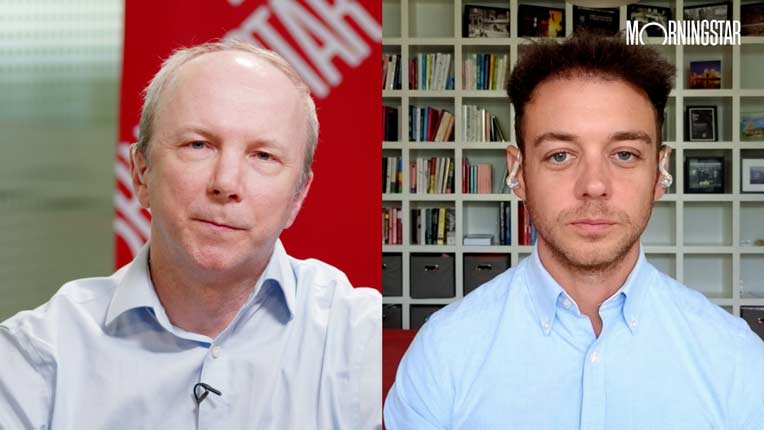Global Economic Growth
Q1 headline figures will show a substantial recovery in global GDP growth following the very weak end to last year, when Q4 developed-economy GDP contracted at a 0.5% seasonally-adjusted annualised rate (s.a.a.r.). Principally as a result of a substantial US rebound, the developed countries are expected to have grown at close to a 2.0% s.a.a.r. in Q1, the fastest pace for some considerable time.
Before popping the champagne corks, however, it should be recognised that just as Q4’s contraction significantly overstated the weakness in underlying conditions, so Q1’s growth rate will overstate a pace of a recovery that is certainly not yet sustainable. Indeed, more recent economic data suggest a weaker trend for global industrial production after strong growth either side of the turn of the year. All of this combines to indicate that Q1 global growth will accelerate to around 3.25%, from 2.5% in the prior quarter, to be followed by a slightly slower pace in Q2.
Hopes of an improvement in the second half and a stronger upturn next year remain intact. Where changed, however, forecasts have generally been lowered in the table below which shows the latest yearly estimates from a number of leading investment houses (click table to enlarge):

Even if the 2013 forecasts became reality, the global economy would still fail to reach its estimated trend growth rate of 3.5% for a second consecutive year, reflecting the effects of the strong headwinds from ongoing fiscal consolidation and euro area recession. As the year progresses, however, much improved financial conditions should gradually work to offset some of these headwinds but the need for further large-scale asset purchases from the main central banks is pivotal to generating growth.
As noted last month, the full year average GDP growth rates shown above disguise the acceleration expected by most commentators through 2013. Recent Bloomberg survey data, for example, indicate the global economy growing at a near 4% y/y pace by Q4, compared to just under a 2% y/y rate in Q4 2012.
The US Economy
Latest “tracking” estimates for the US economy show Q1 GDP growing at a 4% s.a.a.r., way ahead of 1% or so expectation as the year began when fiscal cliff concerns were at their peak. While “tracking” forecasts contain only two months of official data and will be subject to further—probably downward—revisions, both consumer and corporate spending have expanded strongly so far this year. With the sequester (automatic spending cuts) beginning in March and the most recent PMIs and employment data less supportive, most estimates indicate GDP growth will slow to 1%-2% in Q2.
Quarterly figures will likely continue their see-saw pattern due to fluctuations in federal spending. Overall, fiscal drag could approach 2 percentage points of GDP this year which, should GDP grow by round 2%, reveals much stronger underlying growth and hence the optimism that a self-sustaining expansion could be in sight by year end. In the meantime, however the media will more likely concentrate on a Q2 “growth scare”.
The Eurozone Economy
Latest economic and survey data are indicating an odds-on chance that the euro area will record a sixth consecutive quarterly decline in Q1. While Germany will certainly show a much improved outturn, PMIs in France have dropped to a new low for the cycle, indeed indicative of the economy contracting at a 1%-1.5% p.a. rate and there is little that can be done to alleviate the downturn. The outlook is little better in the periphery and financial confidence has been affected by the Italian elections, the confiscation of deposits in Cyprus as a major part of its bailout plan, and both Portugal and Spain failing to reach deficit targets.
With ECB President Draghi also appearing to be backtracking on a second-half economic recovery in the region, a “Plan B” is now sorely needed. The Outright Monetary Transaction (OMT) may have lessened financial contagion but the key to preventing building political risk is to ensure economic recovery sooner rather than later.
The UK Economy
As in the euro area, the UK has also suffered another round of forecast cuts. Only a few commentators expect a “triple dip” recession but the economy remains stagnant and even the Office for Budget Responsibility now only expects very modest 0.6% growth for the full year. A neutral budget provided few surprises but lowered growth projections, resulting in upward revisions to government deficits, which ensures several more years of austerity are required if the debt/GDP ratio is to peak in 2016/17! The government is relying on its new BOE governor, Mark Carney, to offset further tightening and significantly ease the inflation remit in the budget to allow greater monetary policy flexibility.
The Japanese Economy
The new BOJ governor, Haruhiko Kuroda, is certainly delivering on his promise to do whatever it takes to revive Japanese inflation and revitalise a moribund economy. The central bank’s balance sheet is the key source with a substantial increase in the amount and range of assets to be purchased. Confidence has soared, taking equity prices skyward, and bond yields have collapsed. With the yen continuing to depreciate, GDP growth forecasts have risen markedly and the economy is now predicted to grow at a 3% pace in each of the next three quarters. For longer term sustainability, however, the government needs to initiate a summer of reform and deregulation to boost the economy’s long term growth rate.
The Chinese Economy
Views on Chinese economic prospects remain decidedly mixed but with few expecting any great slowdown or acceleration. The government wishes to ensure policy continuity (modestly expansionary fiscal policy and neutral monetary policy) but is also embarking on a new reform agenda that includes lowering risks in the property and financial sectors. Certainly the anti-corruption campaign hit high-end spending during the recent holiday gift-giving season. Growth forecasts for the year remain centred around 8% but inflation needs to be monitored closely as any move above target will likely draw a tightening response.





























